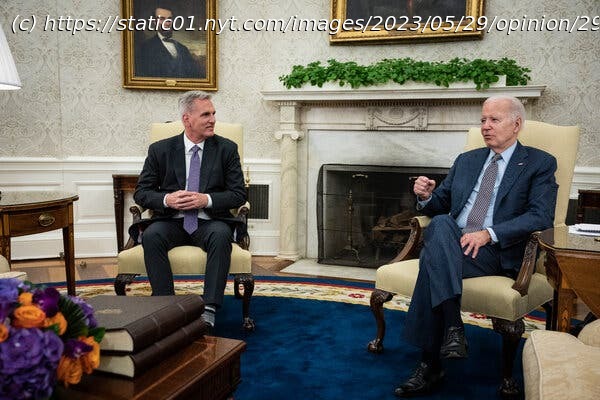If you can’t cut big costs and you won’t raise revenue, there’s only so much balancing you can do.
Members of the ultraconservative House Freedom Caucus are unhappy that the debt ceiling deal wouldn’t significantly reduce federal budget deficits in coming years. One referred to the deal as a sandwich made of excrement, another called it “insanity,” and a third tweeted a barfing emoji. Classy stuff.
Realistically, though, there are two problems with the right wing’s position on deficits. One is that the rapid reduction in deficits those legislators call for would not be healthy for the economy, especially right now. The other is that while deficit reduction is important in the long term, right-wing Republicans are looking for balance in the wrong places.
On the first point, it’s lucky for the U.S. economy that the deal reached by President Biden, House Speaker Kevin McCarthy and their lieutenants is less aggressive than the House-passed Limit, Save, Grow Act of 2023, which the Congressional Budget Office estimated would reduce federal deficits by $4.8 trillion over 10 years.
Too much fiscal austerity too fast can harm the economy because the federal government takes money out of Americans’ pockets when it spends less (or taxes more). While the economy is running hot now, with unemployment in April matching the lowest since 1969, there are abundant signs that a recession is near. The Conference Board’s index of leading economic indicators declined in April for the 13th consecutive month, “signaling a worsening economic outlook,” the board, a business-supported research group, announced.
Even the cuts in the debt ceiling deal would be a mild retardant for economic growth. As reported by The Times, the deal would hold nondefense spending in 2024 at roughly its 2023 level and would increase it by 1 percent in 2025. An initial estimate by The Times predicts that the limits would reduce federal spending by about $650 billion over 10 years, assuming that spending grows at the anticipated rate of inflation after the caps lift in two years.






